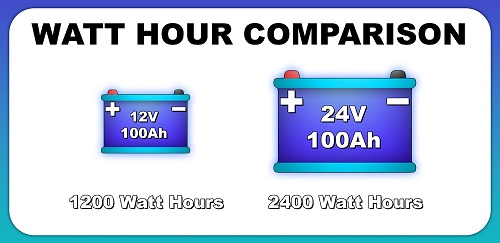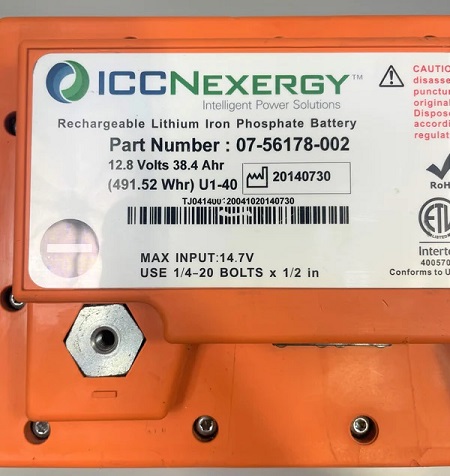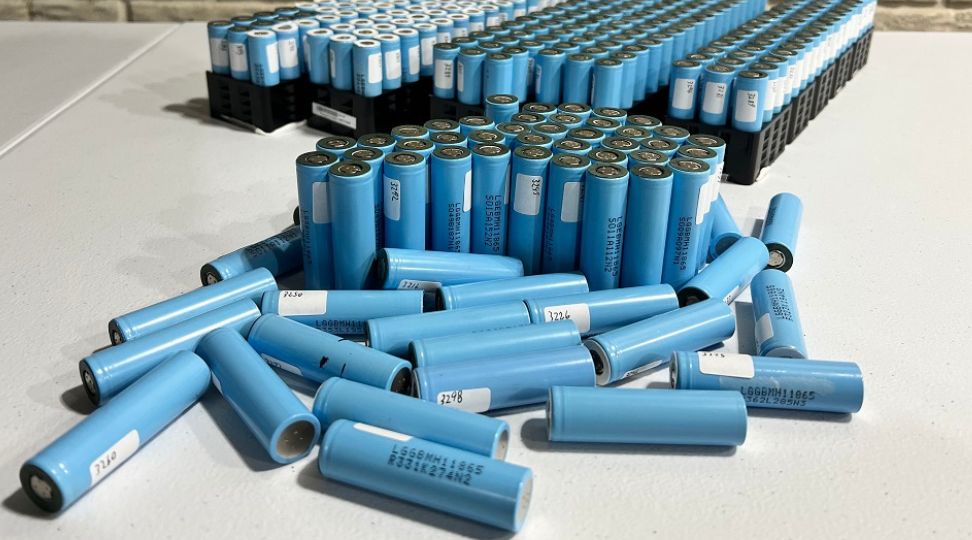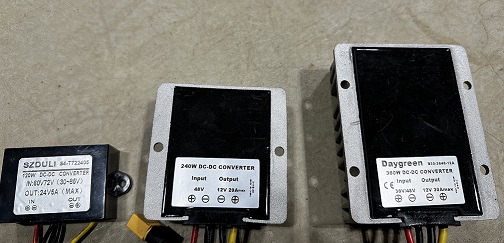
Converting Watt Hours to Amp hours
Table of Contents
Understanding amp hours to watt hours is simple. The relationship between watt hours and amp hours is given by the formula Ah = Wh/Voltage, meaning a battery's amp hour rating is its watt hour capacity divided by its voltage. For example, a 1,200 Wh battery at 12V contains 100 amp hours. In contrast, a 48V 500 watt hour battery has about 10.42 amp hours.
Lithium ion battery technology is at the very core of many modern applications. Everything from electric vehicles to off-grid power solutions uses a lithium ion battery. Lithium ion batteries are sold by the amp hour, but your day to day electronics generally measure the watt hours. So, understanding how to convert watt hours to amp hours is becoming more and more important with each passing day.
In this article, we explore not only the conversion between watt hours (Wh) and amp hours (Ah) but we will dive into practical tips on battery maintenance, battery safety, and battery recovery.
How To Convert Watt Hours To Amp Hours
The relationship between watt hours and amp hours is a simple one. You can find amp hours by dividing the watt hours by the voltage like this:
Ah = Wh / Voltage
Pretty simple, right?
This tiny equation tells us that if you have a battery that’s rated at 1200 watt hours, you can find out its amp hours by dividing the watt-hours by the nominal voltage. So, for a 12-volt battery it would be:
Ah = 1,200 Wh / 12V = 100 Ah
This kind of calculation is good to know, whether you’re assembling cells for a lithium ion battery pack or planning on purchasing a pre-built battery.
For more information about accurately determining your battery pack capacity, check out our determine battery pack capacity guide.
How To Convert Watt Hours To Amp Hours
Here are a few more examples. Let's say you have a 48-volt electric bike battery that can store 500 watt-hours of energy. If you want to find out the Amp-hours (Ah) of the battery, you would use the formula Ah = Wh/Voltage.
Ah = 500Wh / 48V = 10.42Ah
So, the 500Wh battery is equivalent to a 10.42Ah battery at 48 volts.
Now, consider a 12-volt RV battery that has a capacity of 100 amp-hours. To find the watt-hours stored in this battery, you would use the formula Wh = Ah * Voltage.
Wh = 100Ah * 12V = 1200Wh
So, a 12V 100Ah battery can store 1200Wh of energy.
From Theory to Practice: Real-Life Examples
Example 1: Converting Wh to Ah
First, imagine a 48-volt ebike battery that stores 500 watt hours. Using the formula:
Ah = 500 Wh / 48V ≈ 10.42 Ah
There is a direct relationship between watt hours and amp hours. Watt hours is essentially a measure of the total amount of energy that can be delivered for an hour. Amp hours are just one of the components that go into that.
We can basically think of amps as the amount of energy and the volts can be thought of as the speed of the energy. Multiplying the amount of energy delivered per hour by the speed of the energy, you get the total amount of energy delivered per hour, which is watt hours.
Example 2: Calculating Watt Hours from Ah
In another example, imagine an RV battery. The type of battery used in an RV is usually 12 volts and have a capacity of somewhere around 100 Ah. So, the total amount of energy in the battery can be calculated like this.
Wh = 100 Ah x 12V = 1200 Wh
That means that a 12V 100Ah battery will be able to store 1200 watt hours of energy. If you're interested in practical applications of battery systems, check out our DIY powerwall project.
Comparing Battery Systems With Different Voltages
When you are considering two different systems, the voltage definitely matters. For example, a 24V 100Ah compares with a 48V battery 100 Ah like this:
- 24V system:
Wh = 100 Ah * 24V = 2,400 Wh - 48V system:
Wh = 100 Ah * 48V = 4,800 Wh
See the difference, there? Even though the amp hours are the same, the 48 volt battery can store twice as much energy.
Usually, a battery pack is going to require combining cells in groups to get to the voltage and capacity that you want. So, with 3 Ah cells and a target of 100 amp hours, you will have to put 34 cells connected in parallel.
That’s only half the battle though. If you stop there, you will have a massive 100Ah battery with a very low nominal voltage of 3.7V. So, to do most things, you are going to have to put at least 3 of those cell groups in series. Making a 100Ah 3S NMC lithium ion battery would require 102 of those 3Ah cells and would provide around 1132 watt hours of energy.
Watt Hours Vs Amp Hours
So, which one is more useful, watt hours or amp hours? Well, if you are comparing two systems that have the same nominal voltage, then amp hours can be just as useful as watt hours. Remember, the total amount of power (watts) is the voltage times the current. To know the watt hours, you must first know the amp hours.
If the two systems you are comparing have the same voltage, then you can easily use amp hours to compare them. For example, if you have a 5Ah 21V drill battery and a 2Ah 21V battery used for a portable soldering iron, its easy to compare the amount of total between in each system. The 5Ah battery contains 2.5X the energy as the 2Ah battery.
But when comparing two systems of different voltages, this all goes out the window. For example, a 6Ah 36V ebike battery contains a whole lot more energy (216 watt hours) than a 8Ah 12V lawnmower starter battery (96 watt hours).
So, when comparing two random systems that may not have the same voltage, watt hours will always be more useful.
Battery Maintenance, Battery Safety, And Other Tips
To maintain the best possible battery performance, you need to know more than just the conversion formulas. So, here are some other important things that you need to consider:
- Battery Maintenance:
Lithium ion batteries are pretty much maintenance free. Basically, all you have to do for battery maintenance is to keep an eye on battery voltage to make sure it never goes below or above the limits.
It’s good to make sure that you have good battery storage practices. If you follow these basic tips for proper battery maintenance for lithium-ion devices, your devices will last a lot longer. - Efficiency & Power Loss:
No system is 100% efficient, and that’s no different for batteries. Losses are going to occur everywhere to some degree. Heat loss in the wires, connectors, and chargers regulators, etc. It all adds up. Generally, accounting for an extra 10 or 15% is enough to compensate for these losses. - Overcharging Protection and Over-Discharge Protection:
Any lithium ion battery system needs to have overcharging protection and over-discharging protection. These are core features of any BMS and are absolutely critical for safety and battery longevity.
How To Recovery A Lithium Ion Battery
Battery recovery enthusiasts have mastered the art of reviving a deeply discharged lithium battery by knowing exactly how to wake up a lithium battery when it falters; they embrace safe methods to revive lithium batteries by, for instance, using a trickle charger for lithium battery recovery or even force charge lithium battery to exit sleep mode, while occasionally resorting to resetting the battery management system (BMS) to wake up a battery to jolt it back to life. Keen minds also recognize the importance of how to measure battery voltage before charging—often following a guide to checking battery voltage with a multimeter—and sometimes even reactivating a lithium battery with a low voltage cutoff when the situation demands.
Conclusion
Converting watt hours to amp hours is straightforward with the formula Ah = Wh/Voltage. This means that a battery’s amp hour rating is determined by dividing its watt hour capacity by its voltage—for instance, a 1,200 Wh battery at 12V yields 100 Ah, while a 48V battery with 500 Wh provides roughly 10.42 Ah. As lithium ion batteries power everything from electric vehicles to off-grid systems, understanding this conversion is essential for interpreting battery specifications and ensuring optimal usage. This knowledge, combined with practical insights on battery maintenance, safety, and recovery, empowers you to make informed decisions in our increasingly energy-dependent world




